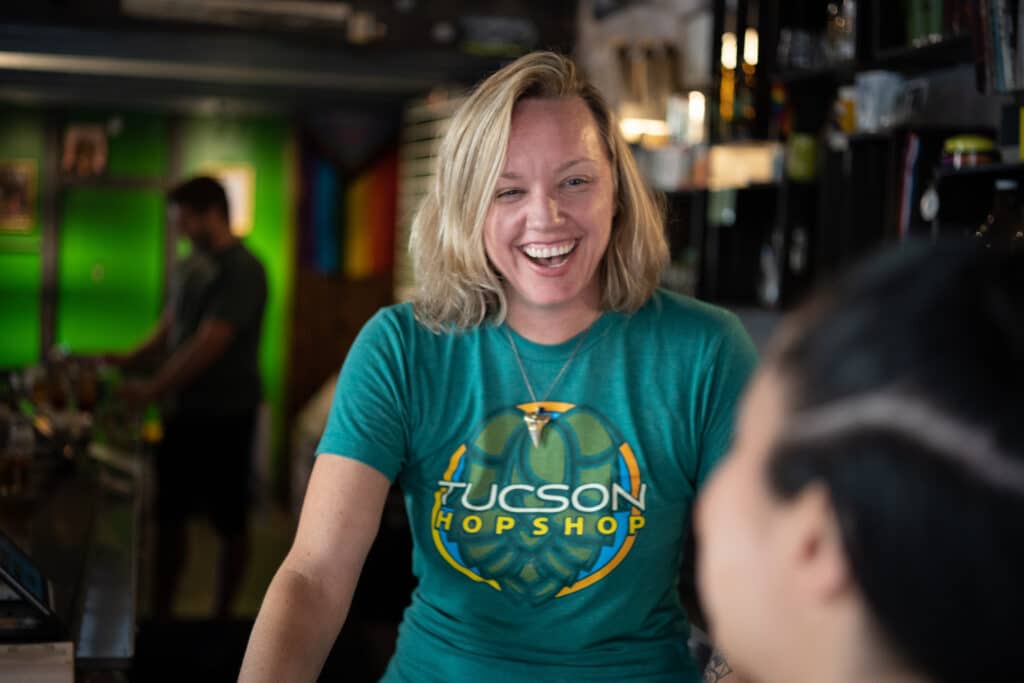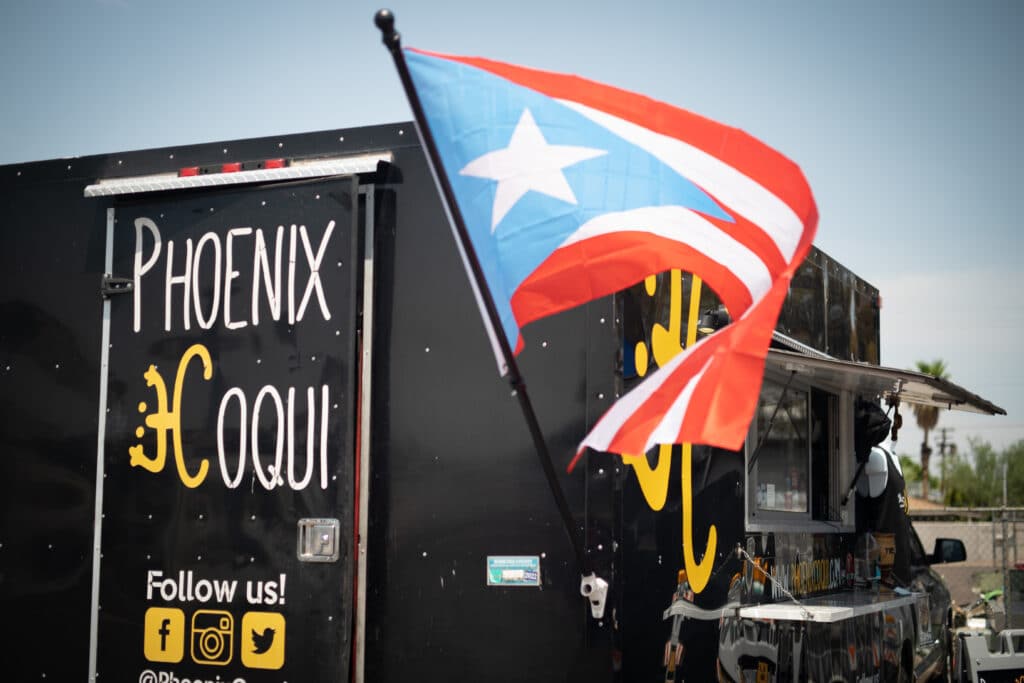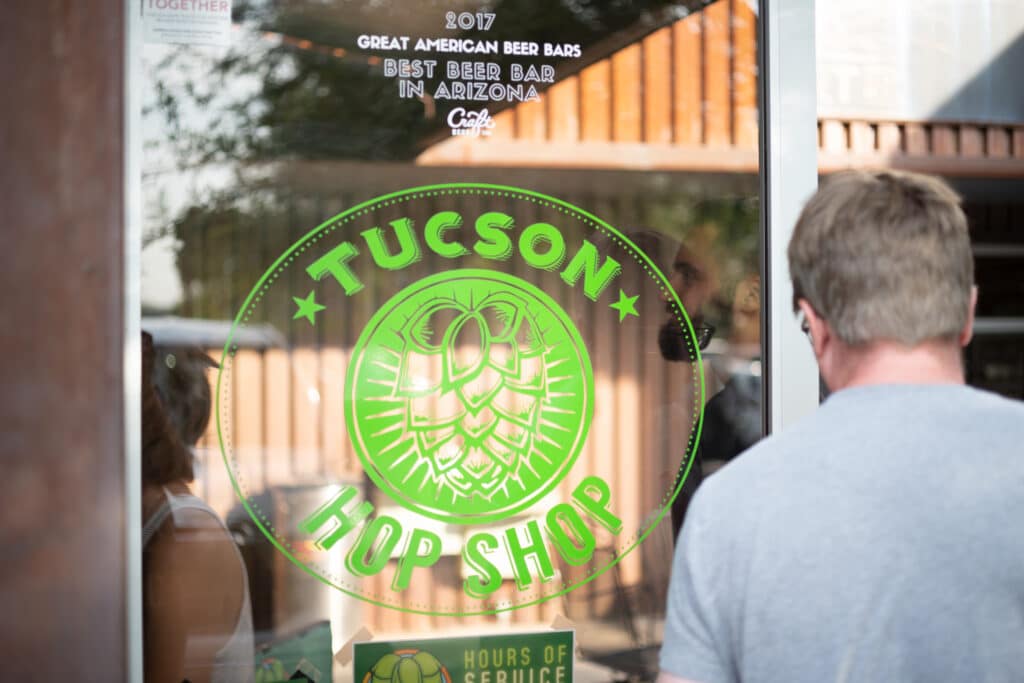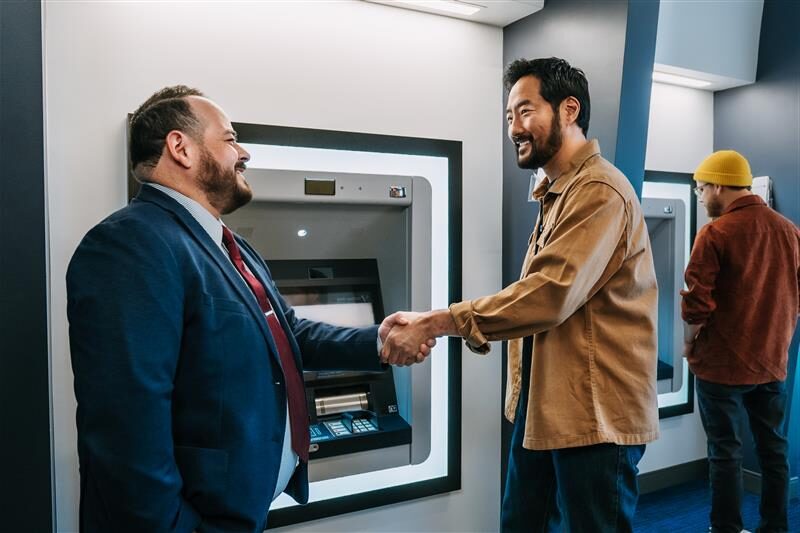It’s 10am on a Tuesday, a mere month into the worst pandemic seen in a generation, and Alexis Carbajal stands in a parking lot, sweating nervously.
Just three weeks earlier, Alexis and his partner Juan Ayala decided to close down their popular Puerto Rican food truck, Phoenix Coqui. They opened the truck in 2017 to high praise and went on to grow the business into a Phoenix late-night staple.
But in April 2020, it felt like opening day all over again, because Phoenix Coqui reopened its doors—kind of. Now, instead of serving the rowdy, but dependable late-night crowd, Coqui opened for lunch for the first time, a gamble at such a tense and unsteady time.
“We were nervous opening because we didn’t know if people would be too scared to come out,” Alexis says. “We assumed we lost our night crowd.”
Before he knew it, a line formed in the normally empty parking lot, full of people hungry for Coqui’s unique take on traditional Puerto Rican cuisine. Within three hours, the food truck was completely sold out.
Alexis breathed a sigh of relief and counted his blessings. The food truck would survive. “It was a big surprise that we were so successful,” he says, “and also an affirmation that we made the right decision.”
To outsiders, this scene just looked like another busy lunch hour. But for Phoenix Coqui and the other small businesses trying to cope with 2020, this was nothing short of a miracle.
Phoenix Coqui’s situation represents the other side of the pandemic story. Amidst the dour economic reports, horrifying news footage, and doomy projections, something interesting happened. Life went on.
While there were devastating losses, on the whole our small business community was able to largely weather the storm, coming out on the other side more agile and stronger than ever. This isn’t the story about a comeback. It’s the story of communities banding together to overcome one of the most enormous challenges of our lifetimes.

From Boom to Doom
Economically speaking, Arizona was the envy of the nation moving into 2020.
In Tucson, economists cheered that the city had finally rebounded from the decade-old recession as growth carried over from previous years. The city showed up on several best-of lists as it became a destination for young families looking to enjoy the natural beauty, hot job market, and unique culture of the Old Pueblo.
In Phoenix, things were growing even faster. Entering 2020, Phoenix was the fastest growing city in the US, according to census data, with an economic output higher than 158 nations.
So when the pandemic first hit, it felt like all that progress and growth would be toppled overnight. For small businesses like the Tucson Hop Shop, the experience felt “completely unreal” as they suddenly had to close their doors after four solid years of growth.
“Everyone I knew was just holding on,” says Hop Shop co-owner Jessie Zugerman. “The hardest part was not being able to see our customers.”
The Hop Shop made the decision to close for two months following the start of the pandemic, even though they were technically allowed to serve beverages to-go. But Jessie says that, at the time, they wanted to set an example for the community and help “flatten the curve.”
The time away also gave the business time to formulate a plan. Two months later, when the Hop Shop reopened for to-go service, they were better able to handle the logistics of the new business model.
“It was like evolutionary biology on a business level,” Jessie says of the transition. “Change is hard but we have to adapt when needed.”
Governing In Crisis
Tucson Hop Shop’s need to adapt parallels the experience of many businesses in the leisure and hospitality industry, one of the hardest-hit areas of the economy in 2020. To keep such an important industry alive, the times demanded quick action and collaboration from local governments and community leaders.
Dan Gibson, Director of Communications at Visit Tucson, says that around half of all employees in the tourism industry were out of work as social distancing and travel restrictions essentially stopped tourism cold. This created an economic ripple effect beyond the primary players, such as hotels and resorts, as the shutdown spread.
“When you look at our resorts, a lot of business is dependent upon group events,” Gibson says. “For events like high school reunions or the Gem Show, all that business disappearing had a traumatic effect.”
Gibson credits quick action by local government in keeping the tourism industry afloat, specifically calling out the Mayor and Council’s office for providing additional help.
Tucson Metro Chamber President Amber Smith echoed the praise for our local government’s efforts. She lists a number of regulatory changes that dealt with the unique challenges of the pandemic, such as allowing alcohol delivery and converting parking lots and sidewalk space into expanded dining areas.
“The collaboration formed from this experience created a lot of positive impacts,” Smith says. “We are overall a supportive community and we got to see that firsthand through the pandemic.”

Teamwork Makes the Arizona Dream Work
The themes of collaboration and flexibility arise again and again while recounting our region’s experience with the pandemic. Disparate businesses suddenly found themselves working together to make it through, switching business models overnight, doing whatever needed to be done to keep their doors open.
For Phoenix Coqui, this came from their partnership with The Rock, a popular LGBTQ club located in the Melrose District of Uptown Phoenix. Coqui had been serving the night crowd outside the club for the previous few years, proving themselves popular among the night owls.
But when the pandemic largely shut down most forms of nightly entertainment, Alexis needed to adjust. He reached out to the owners of The Rock and received permission to operate out of their parking lot during the day.
One year later, Alexis says the business is doing better than ever and that he has no plans to go back to the way it was. “We’re sticking with the same schedule, but we’re hiring more workers because we reached our limit on storage and staffing,” he says. “Right now, we’re in expansion mode.”
A Strong Foundation
As we continue digging from the rubble of 2020, it’s getting easier to see the light at the end of the tunnel for southern Arizona and Phoenix.
According to economist George Hammond, job growth in the Phoenix and Tucson areas is expected to reach 3.8% and 3.2% in 2021, respectively, after a 2% drop in 2020. A study by Molera Alvarez, a government and public affairs firm, found that Arizona’s economy was growing faster than the rest of the nation, as population growth remained solid.
Dan Gibson is already seeing the tourism industry start to pick back up as more people get vaccinated and regain their confidence and desire to travel.
“My calendar is getting busier and I can see that people are getting more comfortable,” Gibson says. “Business travel is certainly back. It’s all systems go over here.”
Amber Smith says that Tucson’s increasing economic activity is partly due to the city’s resilience, which made it uniquely situated to handle a situation of this magnitude. “In so many ways, we didn’t slow down,” she says. “It felt like the world stopped, but we kept moving.”
Smith mentions industries such as construction, manufacturing, and especially IT being instrumental in keeping the region strong through such a turbulent period. She specifically stresses IT as a continued need, as many businesses made the shift to a more digital-focused workplace.
“There is a high demand,” she says, “especially since it’s become clear that every company needs to be an IT company in order to succeed in the future.”

Waiting for the Fall
Another sleepy summer in southern Arizona has paved the way for a lively fall when the students, snowbirds, and travelers return. Judging from the optimistic attitudes of our small business leaders and encouraging economic data, it appears as though the future is bright.
As we watch some of the nation’s largest cities rebuild after the tumult, Dan Gibson thinks Tucson’s relatively small size played to its advantage.
“In a town where there’s less access to capital, large events, and other benefits of large cities,” he says, “we’re used to riding out the highs and lows and taking care of each other.”
While no one would choose to relive the past year and a half, it’s clear the challenges produced some unexpectedly positive outcomes. Amber Smith says that succeeding through the pandemic depended on “learning what you do best” as a community. In the case of southern Arizona and Phoenix, that meant forming collaborative networks and staying nimble to move with the whiplash changes of the pandemic economy.
“It was a win-win for both of us,” Alexis Carbajal says of his partnership with The Rock. “The key was finding that opportunity for collaboration and support.”
For many small businesses, the pandemic served as a reminder of how powerful and resilient they could be when faced with a seemingly insurmountable challenge.
“We had the opportunity to figure things out that we didn’t know needed figuring out,” says Jessie Zugerman, adding that her employees are the “best in town” and responsible for the bar’s survival. “If we can get through this, we can get through anything.”



